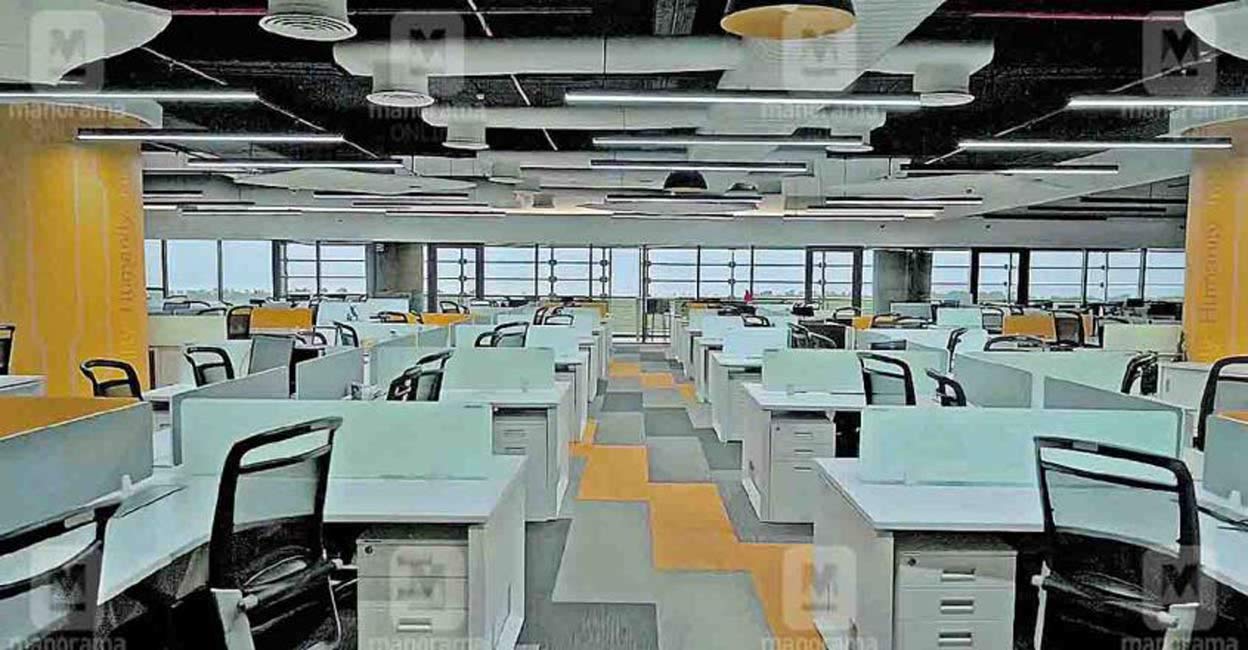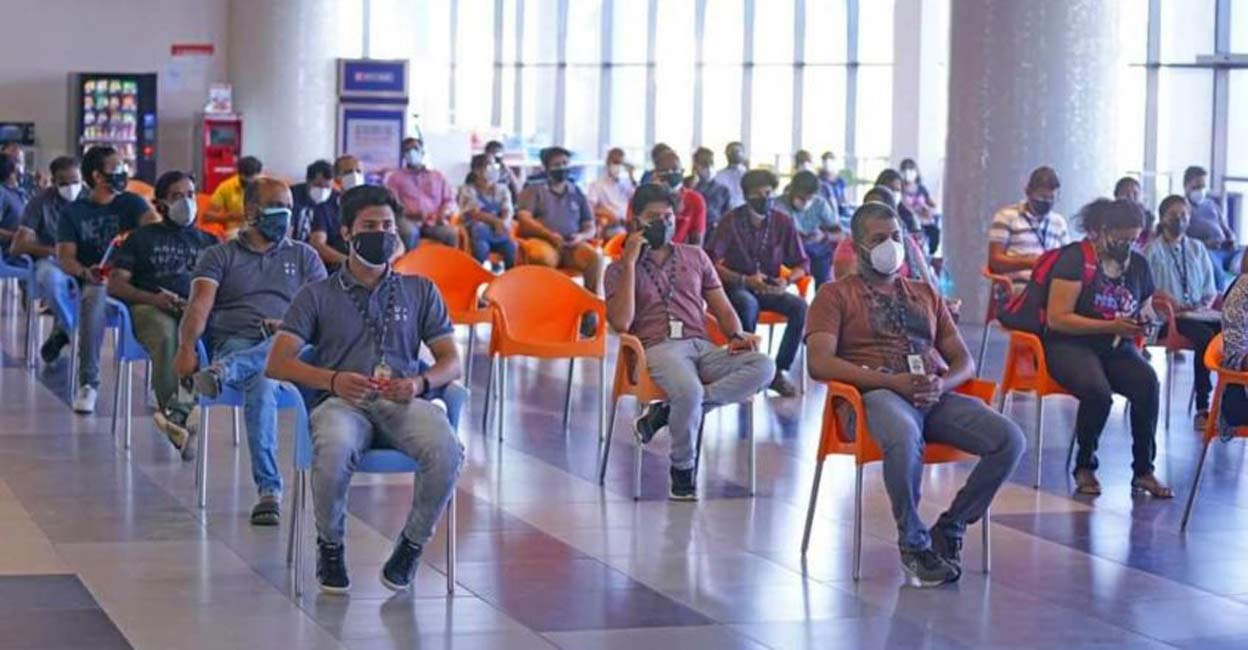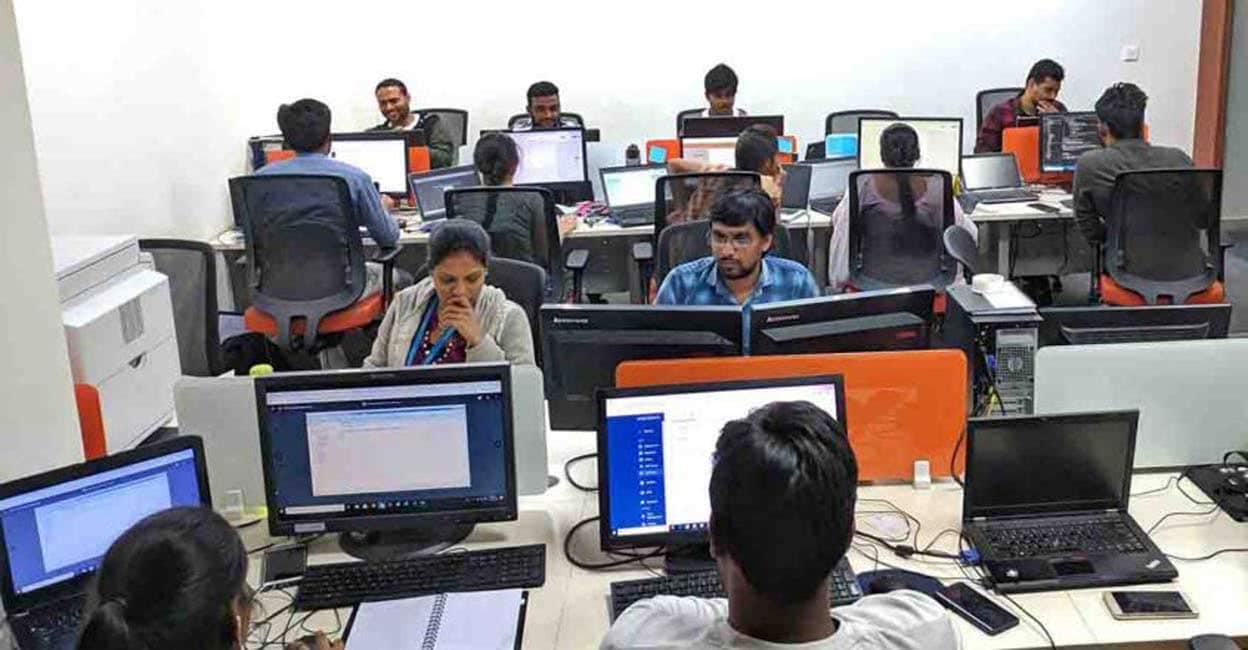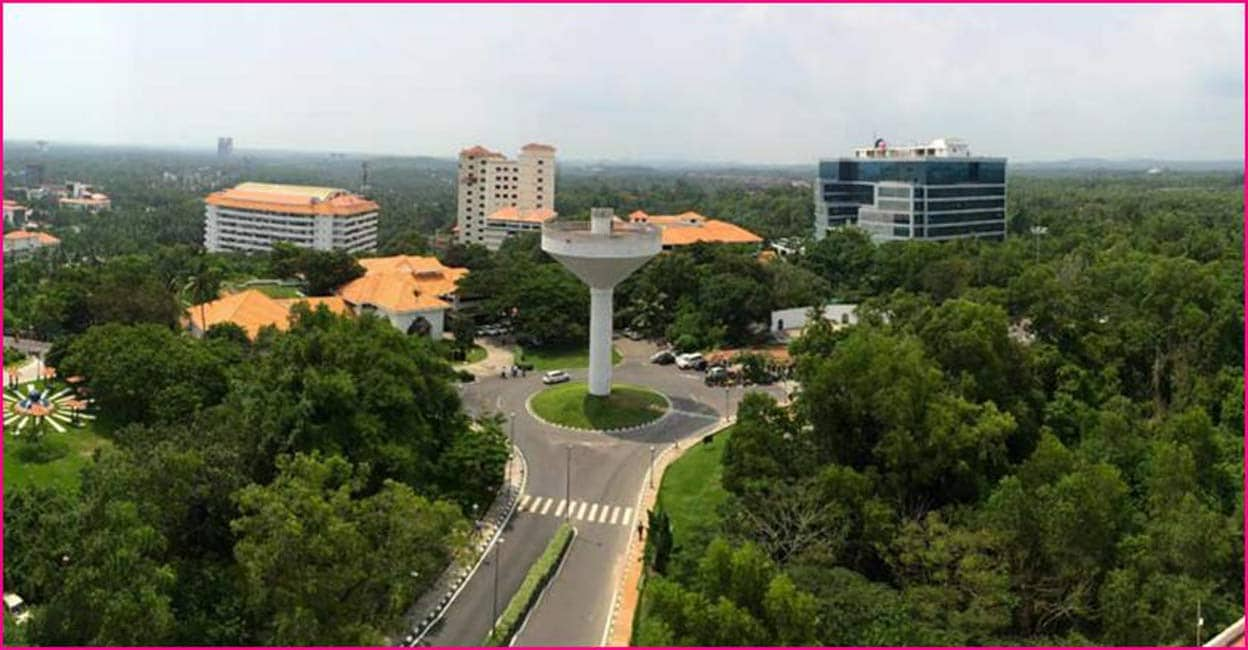Life after COVID-19: What lies in store for Kerala’s IT parks

Mail This Article
Thiruvananthapuram: The information technology parks may never go back to be the bustling workplaces they were even after the COVID-19 imposed restrictions ease, Kerala IT Parks chief executive officer John M Thomas said. Tech companies are expected to stick to a hybrid model of working in which employees take turns to go to office, he said.
Thomas, who had worked as the cloud data migration leader with Equifax before joining the Kerala IT Parks, said that the “work near home” scheme may no longer be relevant since the companies have overcome the teething troubles of work-from-home set-up. He said that he expected Kerala to benefit from an industrywide repurposing of workspaces.
The NIT Calicut alumnus said that he expected to go soft on rent rates of the IT parks in Kerala considering the disruptions caused by the pandemic. Excerpts from a wide-range interview with Onmanorama.
* What is the present situation in the IT parks of Kerala? Where are they headed for?
A majority of employees are not going to the IT parks because of COVID-19 and the lockdown. We expect the companies and their employees to return after the vaccination is completed. We also expect a new digital workforce to enter the industry. The digital services sector is looking at about 15 per cent growth across India next year. A corresponding growth may be experienced in Kerala.

Many companies have realized that their work could be done remotely. When they consider new locations, India is expected to be among them. We will also benefit from it. I am not concerned about the future of the parks. We have a bright future if we continue to be a good service provider.
It is true that COVID-19 has affected all sectors. But it is also true that information technology will benefit the most when it is all over. It is up to us to position us to benefit from the change. We have to view COVID-19 as an opportunity to dominate new areas.
* Is work from home likely to continue?
Even when employees return to offices, companies may not go back to complete on-site models. They may opt for a hybrid model of working from home as well as office. A specific share of workers may continue to work from home. When a section of the workforce work remotely, the companies may change the space they use. Companies may shift from fixed spaces to hoteling spaces where employees reserve seats when they want to work. Spaces like video conferencing rooms may be more prominent because a percentage of workers will always remain virtual. Even interior designing may undergo futuristic approaches.
* Many companies are already considering remote-work models.
I do not think that 100 percent companies will shift to 100 percent remote working. Many of the product companies which demand maximum mutual interaction have limits in shifting to virtual methods. Some projects can’t be run on a 100 percent remote work model. Still, virtual work will have unprecedented relevance. One thing is clear. IT workspaces will not return to the pre-COVID-19 conditions. Virtualization is also linked to employees’ mental health. IT is creative work. Many professionals do not want to continue working from home. They will have to physically interact in many areas.
* Will IT parks require redesigning?
Timely changes are required everywhere. IT parks have a primary duty of providing the infrastructure for large-scale employment generation. We are on a mission to provide spaces to startups as well as large companies. IT development is not just building infrastructure. This area is human-centric. If we were to attract more people, we have to focus on social infrastructure. Employees should have a community feeling.

* There was a time when the government tried to build technology parks all by itself. Then co-developers were brought in to complete construction projects. Are our priorities set to change again?
These matters belong to the government’s IT policy. Yet the government needs to have its own buildings if it were to support startups. Private developers may not have much interest in working together with startups and the rent they charge on the spaces may be too high for entrants. They always prefer clients who occupy 20,000 to 50,000 square feet of space. We have a duty to generate employment, increase IT exports and support startups, the last of which depends on the government’s ability to provide its own spaces.
We had waived the rent for IT companies for the first three months after the pandemic started. Some of the companies were not able to pay rents even in the subsequent months. The government is very particular not to initiate any action against those companies. The government-run IT parks are strictly following for more than a year the chief minister’s direction not to disconnect electricity or water to the companies which haven’t paid up.
At the same time, we need good co-developers. They have a wider reach. Many big IT companies expand along with big co-developers.
* Companies may not want all employees to go to office at the same time anymore. They may want half the workforce to work from home all the time. Won’t that diminish the demand for IT space?
We expect demand to pick up even in such a negative situation. Technopark has still not been able to cater to the demand from companies. We always had companies asking for space.
* Won’t investment be lower in the pandemic years?
All companies are in a watch-and-wait mode. Nobody is taking bold decisions. But that does not take away the possibility of them asking for large spaces in future. We expect location expansions. Many companies are sure to revisit their location strategy. Kerala will have an upper hand in such a situation. We will benefit from our advance in the sustainable development index.
Kerala is rich in human resources. Many people who work in other states wish to go back to their home states. They are held back by a lack of social infrastructure. Bridging this gap should be our top priority. IT development is not confined to parks. People are also looking if a park has a hospital, mall or a walkway in its vicinity.

* There was a budgetary allotment to strengthen “work near home” centres in Kerala. What happened to that initiative?
Technopark was allotted Rs 3 core and Infopark and Cyberpark Rs 1 crore each. We were thinking on those lines to overcome the limitations of work-from-home, but the companies themselves found the solutions. They supplied their workers with workstations and internet connectivity. Since we did not have to find solutions to an already solved problem, we did not take it further.
On the other hand, a significant share of workers of many big tech companies are in Kerala because of COVID-19. If we could arrange captive/co-working spaces for them in our parks, we will increase the potential for more investments. We are looking at the possibility.

* Do you have a back-to-work strategy to usher the employees back to the IT parks after the vaccination drive is completed? Have you thought of space redesigning to ensure that workstations are at a safe distance from each other?
We might want to consider it. At the moment, we are not ready for a complete back-to-work strategy. No company is likely to bring back all their workers to office at the same time. Workers will return in phases. We have to wait for the human resources teams in different companies to make their assessments. Whatever action is taken, they will have to take into account the physical and mental well-being of the employees.
* Many IT companies are still struggling with the rents even though the workers have gone virtual. They were only given a waiver for three months last year. Are they likely to shut shop?
This is for the government to decide. We have to take into account the expenses in running Technopark before waiving rents. There is no change in expenses such as the repayment of loans taken to construct the buildings and the maintenance costs of power plants and water treatment plants.

Then we have variable costs, including what we spend on our human resources. A large section of associated workforce including security guards are still working.
I can’t fire a security guard in the time of COVID-19. I have to pay the full wages irrespective of any work they have. In short, the expenses on IT parks have remained the same even as the revenue came to a naught. This is too great a load for the IT parks to bear. It is for the government to take a decision.
* The IT park managements have not even done away with the 5 percent annual increment in the time of COVID-19. Even small companies were left to fend for themselves.
It is true that small companies are facing a crisis. I believe that the issue is being discussed in the right forums. I think there will be a solution which is not too hard on anyone.

